www.magazine-industry-usa.com
25
'23
Written on Modified on
The Evolution of Internet of Things
How the Internet of Things (IoT) is helping change the consumer, commercial, and industrial world to become more efficient - By Milton D'Silva.
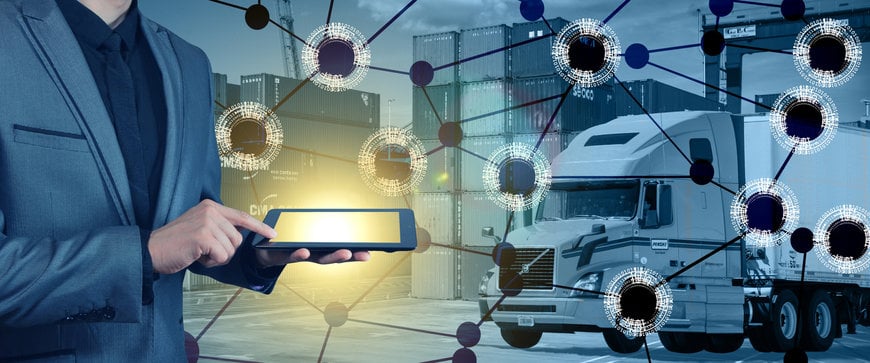
The Internet of Things or IoT is a network of devices or physical objects that are connected and exchange data with other devices and systems over a local network or the internet. It is not only physical objects but also living things – animals or even human beings equipped with unique identifiers (UIDs) – that have the ability to generate and transfer data over a network. The sensors and devices that comprise the IoT ecosystem collect data from surroundings – temperature, pressure, force, vibrations, visuals, etc., which is then sent to the cloud for processing and put to use for various applications in homes, commercial establishments or industries. Anything smart – from TVs and fridges to wrist bands and watches, health and fitness trackers to thermostats, and cab aggregators to fleet-management solutions – are examples of IoT in everyday use.
The term Internet of Things was first used by Kevin Ashton in 1999 while working at MIT on a project, which created a global standard system for RFIDs and other sensors. But even before that, the world’s first IoT device was designed by a group of students at the Carnegie Mellon University in the early 1980s to find the availability of Coca-Cola at the campus vending machine in order to save them the trip to the machine in case it had run out of supply. They had achieved this with the help of microswitches installed in the vending machine and connected to the campus intranet, which could also tell them if the bottles were cold. Purists however maintain that the concept of connected devices is much older and dates back to 1832 when the first electromagnetic telegraph was designed, which allowed direct communication between two machines through electrical signals.
It may be pertinent to note that the network of devices that creates the IoT communicates through wires (Ethernet cables) or wirelessly (Wi-Fi or cellular network), directly or via a laptop or a smartphone, making data sharing and data access simple and seamless. Computers and smartphones are by default connected to the internet and hence not considered IoT devices. On the other hand, IoT devices are those that are in the usual sense not expected to have an internet connection, which is enabled by the increasingly affordable, smaller yet powerful chips and sensors.
While the overwhelming majority of the connected devices are wireless, a few are wired – and these have their advantages – so most applications use a hybrid of networks. The type of network chosen depends on the network range, network bandwidth, power usage, intermittent connectivity and security. Though the concept of communication between machines or devices predates the internet, the evolution of IoT and its wider applications truly began with the arrival of the internet.

ABB study ‘Billions of Better Decisions’ examines contemporary scenario of IIoT deployment. Source ABB
The market
According to Fortune Business Insights, the global IoT market is projected to grow from $478.36 billion in 2022 to $2,465.26 billion by 2029, at a CAGR of 26.4% in forecast period. This massive growth is on account of expanding applications of IoT solutions and services to all aspects of life, driven by major investments in smart cities and transport infrastructure. The IoT technology functions as a global infrastructure for the information society, enabling advanced services to interconnect things based on existing and evolving communication technologies without human intervention, says the report. Connected devices such as smart meters, smart light and sensors have set the trend globally. The aspiration of the new generation is smart infrastructure, smart homes and buildings and smart transport solutions.
Talking specifically about Industrial IoT or IIoT, estimates by Precedence Research says the market was valued at $326.1 billion in 2021 and is expected to hit around $1742.8 billion by 2030 with a registered CAGR of 20.47% during the forecast period 2022 to 2030. The IIoT market is driven mainly by manufacturing, energy & power, oil & gas, healthcare, logistics & transport and agriculture, among other segments. The significant factors driving the growth of the global IIoT market is the increasing awareness related to IoT solutions and widespread adoption of different IoT solutions in various industrial applications such as robotics, medical devices, and software-defined production processes, among others.
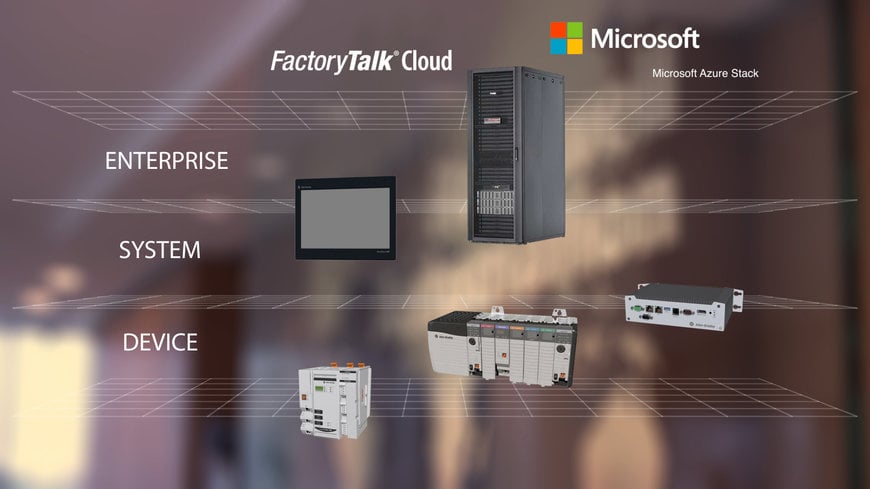
Rockwell Automation has built IIoT and analytics in its compute products. Source: Rockwell Automation
Estimates vary about the number of IoT devices worldwide, but these are in tens of billions. According to Statista, there were 9.7 billion connected devices in 2020 which are set to almost triple to more than 29 billion in 2030. IoT devices are used in all types of industry verticals and consumer markets, with the consumer segment accounting for around 60 percent of all IoT connected devices in 2020.
The IoT ecosystem is more than mere connected devices, nor is IIoT merely a matter of connecting plants and machinery to the edge or cloud storage. There are a whole lot of technologies involved in the process ranging from chips and sensors that capture data from physical assets to communication networks; advanced analytics, including machine learning and artificial intelligence; Simulation and collaborative tools, including digital twins; machine vision and human-machine interfaces; and security systems and protocols.
Among the major players in the IoT/IIoT space are ABB, Amazon Web Services, Cisco Systems, General Electric, IBM Corporation, Intel Corporation, Microsoft, Oracle Corporation, Robert Bosch GmbH, Rockwell Automation and Siemens, besides several others.
IoT impact on industrial automation
Industrial automation, as exemplified best by the progress made by the automobile industry over the last 100 years, increased productivity dramatically and reduced the cost of production. The term ‘automation’ in industrial context was first used in 1946, and around the same time automobile manufacturer Ford established the first Automation Department in the industry. The Sixties decade witnessed the introduction and SCADA as well as the launch of the first PLC, which further helped the evolution of industrial automation with extensive deployment and better integration of sensors and actuators at different operational levels in both discrete manufacturing as well as process industries.
This was aided by rapid developments in computing power as well as robotics, also helped in no small measure by improved communication networks that culminated in the development of the internet, paving the way for the advent of the Fourth Industrial Revolution or Industry 4.0, also known as the IoT era. If computers and robots helped automate production by making machines perform better than human operators, IoT has helped automate computing tasks and unleashed the true power of robotics – and by extension, automation – to minimise human intervention and add further gains to production efficiency.
The key to unlock these further gains in efficiency is in digital transformation, which in turn is all about data – or more appropriately, how to gather, store, analyse and use it. The technology that facilitates this data deployment is what IoT is all about – the solution that links devices, machines, plants and enterprises on one hand, and connects companies to their customers on the other.
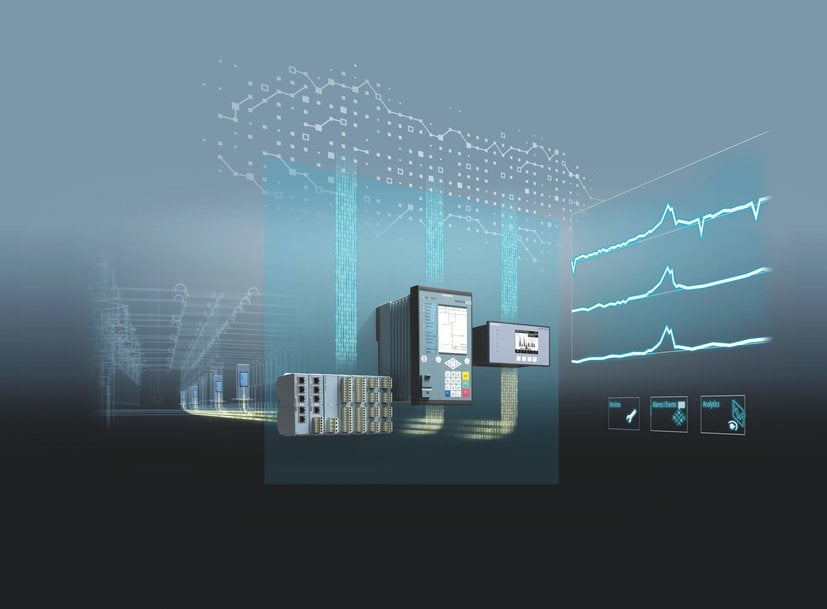
Grid Diagnostic Suite IoT based energy automation applications. Source: Siemens
IoT and digital transformation
IoT is among the most important factors that are into play in the ongoing journey of digital transformation of business and the economy. In fact there are many startups that have become unicorns today whose business models are built exclusively on IoT, totally bypassing the conventional brick and mortar model of business. While the early predictions about the impact of IoT bordered on hype, the contemporary estimates are rooted firmly in reality with several use cases of business transformation and turnarounds. According to a 2021 McKinsey report, ‘The Internet of Things: Catching up to an accelerating opportunity’, the potential economic value that the IoT could unlock is large and growing. By 2030, the report estimates that it could enable $5.5 trillion to $12.6 trillion in value globally, including the value captured by consumers and customers of IoT products and services.
What is more important, IoT can help companies in general, and SMEs in particular, reduce waste, optimise operations and monitor processes more effectively. According to a recent article on the portal of World Economic Forum, IoT technology is a huge opportunity to build a sustainable and prosperous future for SMEs. The WEF article cites a previous analysis that shows that 84% of current IoT deployments are “addressing or have the potential to address” the UN’s Sustainable Development Goals. Through applications such as increasing energy efficiency and encouraging greater use of renewables, IoT technology can minimise the impact businesses have on the environment, help them adapt to a new reality and at the same time deliver gains in productivity and efficiency.
In early 2022, ABB had released the findings of a global study of international business and technology leaders on industrial transformation, looking at the intersection of digitalisation and sustainability. The study, ‘Billions of Better Decisions: Industrial Transformation’s New Imperative’, examined the contemporary scenario of IIoT deployment and its potential for improving energy efficiency, lowering greenhouse gas emissions and driving change. According to ABB the goal of this research was to spur discussion within industry regarding opportunities to leverage the Industrial IoT and empower companies and workers to make better decisions that can benefit both sustainability and the bottom line. One of the important findings of the study is that 96% of decision-makers say digitalisation is ‘essential to sustainability’.
“Sustainability goals more and more are a crucial driver of business value and company reputation, and Industrial IoT solutions are playing an increasingly important role in helping enterprises achieve safe, smart and sustainable operations,” Peter Terwiesch, President of ABB’s Process Automation business area had then said about the report. “Unlocking insights hidden in operational data holds the key to enabling literally billions of better decisions throughout industry and acting upon them, with significant gains in productivity, reduced energy consumption and lower environmental impact.”
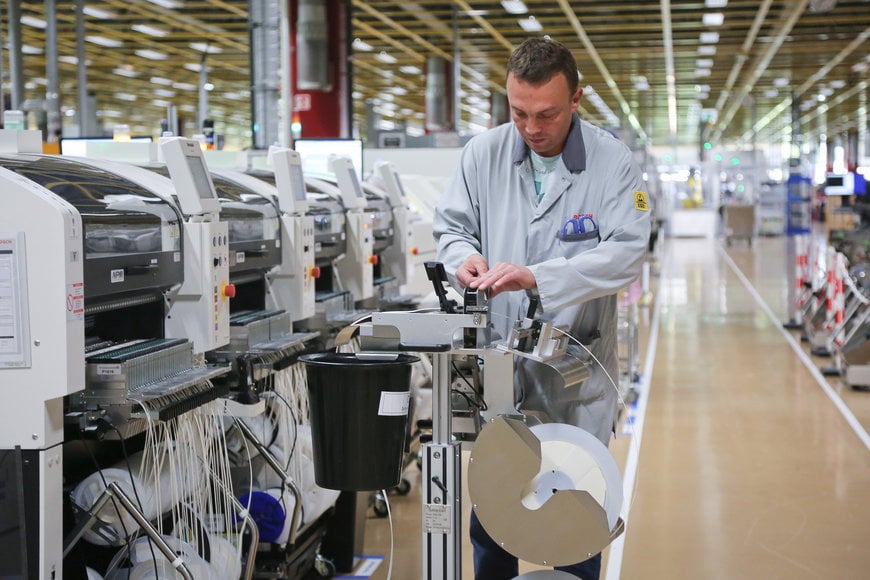
Bosch provides customised IoT and Industry 4.0 solutions. Photo: Bosch
Major players and IoT platforms
Three of the five Big Tech American companies – Alphabet (Google), Amazon and Microsoft – are offering comprehensive IoT platforms that are popular among businesses and enterprises across the spectrum.
Google Cloud IoT is a cloud-based internet of things platform designed to help organisations capture and analyse business data from multiple devices and store them in a centralised repository. The Google Cloud suite of products supports IoT use cases and future solutions that customers and their partners manage. Users can customise specific IoT solutions to meet their unique needs with the ability to derive insights using Google Cloud’s industry leading AI/ML intelligence. However, recently Google Cloud has announced that it is shutting down its IoT Core service, giving customers a year to move to a partner to manage their IoT devices.
Amazon Web Services has AWS IoT for Industrial, Consumer, Commercial and Automotive applications – services and solutions to connect and manage billions of devices. AWS IoT provides the cloud services that connect IoT devices to other devices and AWS cloud services. AWS IoT provides device software that can help users integrate their IoT devices into AWS IoT-based solutions. If your devices can connect to AWS IoT, AWS IoT can connect them to the cloud services that AWS provides, says the company.
Microsoft has its own IoT platform – the Azure Internet of Things (IoT) – a collection of Microsoft-managed cloud services that connect, monitor, and control billions of IoT assets. It also includes security and operating systems for devices and equipment, along with data and analytics that help businesses to build, deploy and manage IoT applications.
ABB launched the Ability™ technology platform in 2017, bringing together a number of its digital products, solutions and services under one umbrella. The ABB Ability platform today offers hundreds of sector specific digital solutions, which enable enterprises to increase productivity and improve safety at lower costs. These solutions combine ABB’s deep domain expertise with connectivity and software innovation to empower real-time, data-driven decisions for safer, smarter operations that maximise resource efficiency and contribute to a low-carbon future.
Siemens offers MindSphere® as the leading industrial IoT as a service solution. Using advanced analytics and AI, MindSphere powers IoT solutions from the edge to the cloud with data from connected products, plants and systems to optimise operations, create better quality products and deploy new business models. MindSphere and Industrial Edge as well the low code capabilities of Mendix are an integral part of the Siemens Xcelerator business platform.
Like ABB and Siemens, GE offers the Predix Platform – an IoT edge-to-cloud foundation shared by GE Digital applications such as Asset Performance Management (APM) and Operations Performance Management (OPM). It supports innovative IoT solutions by providing a common software foundation for fundamental IoT security, scalability, and services functions. By leveraging Amazon Web Services (AWS) while adding critical IoT functions, the Platform provides a common application foundation, shared user experience, rapid-time-to-value, and the customer economy of a purchase-once investment in secure and scalable IoT software infrastructure. Essentials is the commercial offering of the Platform, delivering customers a complete package of the core Platform functions used by GE Digital applications.
Other companies too have their respective IoT platforms – Cisco Systems’ Cisco IoT Control Centre; Rockwell Automation’s ThingWorx IIoT platform; IBM Corporation’s IBM Watson IoT; Intel Corporation’s Intel IoT Platform, among others.
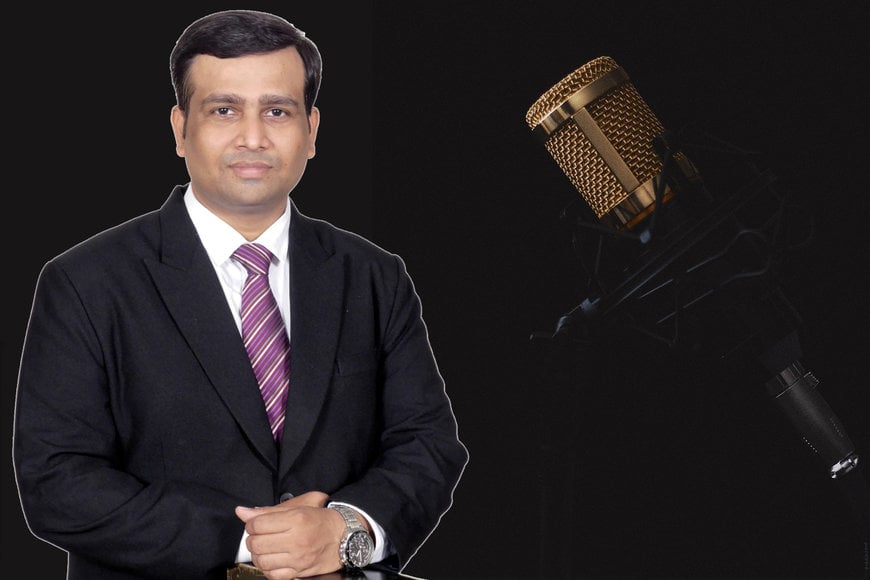
Dr Shekhar Pawar, Founder/CEO of SecureClaw Inc., USA.
How secure is the IoT ecosystem?
For all the advantages and benefits IoT brings to the table, there are a few disadvantages like high initial cost of deployment; the many complex technical issues that need to be addressed first; and the lack of uniformity in standards and protocols, besides the need for reliable internet connectivity. But the biggest disadvantage is the challenge in keeping all the data safe and secure. Cybersecurity is today a major area of concern given the several high profile incidents of hackers targeting enterprises with various forms of cyber attacks.
According to Dr Shekhar Pawar, DBA in Cybersecurity domain at SSBM, Switzerland and Founder/CEO of SecureClaw Inc., USA, and GrassDew IT Solutions Pvt Ltd, Mumbai (India), while IIoT technologies help businesses increase efficiency and make better business decisions, it's also critical to realise that hackers are becoming increasingly skilled at carrying out cyberattacks on the expanding cyber attack surface. IIoT is frequently subject to cyberthreats such as malware, distributed denial-of-service (DDoS) attacks, botnet, and device manipulation. IIoT needs, at a high level, security that is enabled by hardware, security that is enabled by horizontal device-to-device communication via distributed ledger technologies, and security that is supported by context-aware intelligence for identifying aberrant or malicious behaviour.
“Any intrusion into an IoT network can completely shut down a company, which can result in a loss of customer loyalty, income, and more. Businesses must make sure that the various elements of the security checklist are taken into account in their compliance framework. One of them is the Product/Device Life Cycle, where security must be given full consideration from the product's genesis stage onward. Both the operation and design of an IoT device should take security into account. A reliable security compliance framework must keep close track of who has access to which devices and what functions they are permitted to carry out. Authentication and authorisation are also crucial for IIoT. Authorities should imply role-based access controls over an IoT product's functions. This restricts access in products for multiple users and reduces risk.
The security framework must restrict device connections to those that are authenticated. Data protection rules are a must in the IIoT security landscape, and all IoT products must limit the data they collect to reduce the likelihood of a data breach. Organisations, particularly those in the manufacturing sector, must be transparent about the data they are gathering and the reasons why it is important,” cautions Pawar. “Last but not least, Vulnerability Assessment and Penetration Testing (VAPT) is a must which should incorporate third-party, digital, and physical testing. Without ongoing VAPT, followed by pertinent patching, there is no straight route to IIoT security.”
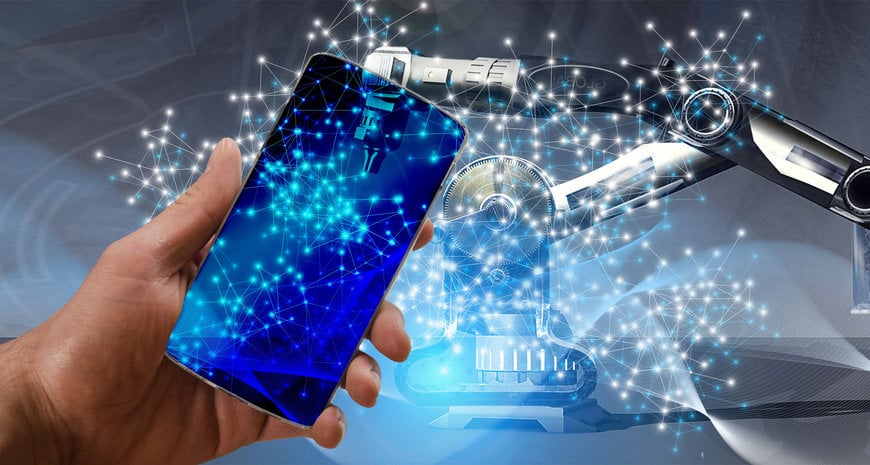
IoT is already at work in various pilot projects. Image by Gerd Altmann from Pixabay
The future of IoT
Looking at the potential of IoT and what it has achieved so far, one can confidently assert that the future of IoT is bright with limitless possibilities as the world of technology is constantly evolving. Whether it is the figures bandied about the number of IoT devices growing exponentially or the overall market size growing to $2,465.26 billion by 2029, the expanding applications of IoT solutions is a reality regardless of domain – consumer, commercial, and industrial. With wearable devices, it is not just individual fitness or healthcare management, but in industrial context, the safety of workers in general, the lone workers in remote locations in particular. The recent case of a woman who survived a murderous attack thanks to her smartwatch is just an extreme example. With the growing spread of low latency 5G networks, deployment of IoT in more critical functions will get further boost.
Rapid developments in the realm of Artificial Intelligence and Machine Learning are leading to some fascinating applications and use cases of AIoT (Artificial Intelligence of Things) in industry, with improved human-machine interactions and more efficient operations. AIoT solutions will further advance efficiency in operations of various industries and boost digital transformation. Add to this the quiet revolution in the field of machine vision that is helping causes as diverse as the smart factories, smart cities and autonomous driving, all adding to the growing proliferation of IoT devices. But perhaps the biggest area of change for the better is the role IoT is expected to play in promoting sustainability, as predicted in the ABB study in the early part of this article.
The trouble with matters related to the environment and sustainability is that the world today is much wiser about the damage human activity has caused, and what needs to be done, but the issues at stake are too complex for an easy solution. IoT in this context is seen as a vital link that can connect the many different efforts put into solving this complex problem of gigantic proportions. From smart energy solutions to clean water distribution; sustainable agriculture to better waste management; and smart cities to decarbonised transportation, IoT is already at work in various pilot projects whether sponsored by governments or adopted by the corporate sector. Going forward, these solutions would be adopted on a global scale.
Finally, the elephant in the room – security – will also be tamed with the same technology. IoT security tools will be increasingly at work to prevent security breaches and plug the loopholes. The world will be a better place with the rapid spread of the IoT ecosystem.

